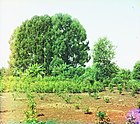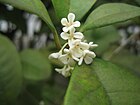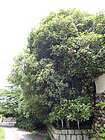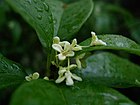Note: This is a project under development. The articles on this wiki are just being initiated and broadly incomplete. You can Help creating new pages.
Difference between revisions of "Osmanthus fragrans - Fragrant olive"
(→Uses) |
(→External Links) |
||
| (9 intermediate revisions by 2 users not shown) | |||
| Line 1: | Line 1: | ||
[[File:Osmanthus fragrans (orange flowers).jpg|thumb|right|''Osmanthus fragrans'', ''Fragrant olive'']] | [[File:Osmanthus fragrans (orange flowers).jpg|thumb|right|''Osmanthus fragrans'', ''Fragrant olive'']] | ||
| − | |||
'''Fragrant olive''' is a species native to Asia from the Himalayas through southern China to Taiwan and southern Japan and southeast Asia as far south as Cambodia and Thailand. | '''Fragrant olive''' is a species native to Asia from the Himalayas through southern China to Taiwan and southern Japan and southeast Asia as far south as Cambodia and Thailand. | ||
| − | |||
==Uses== | ==Uses== | ||
| − | + | {{Uses|Carbuncles}}, {{Uses|Boils}}, {{Uses|Whoping cough}}, {{Uses|Retinitis pigmentosa}}, {{Uses|Dysmenorrhoea}}, {{Uses|Rheumatism}}, {{Uses|Bruises}}. | |
==Parts Used== | ==Parts Used== | ||
| Line 10: | Line 8: | ||
==Chemical Composition== | ==Chemical Composition== | ||
| − | The content of 1,3,5-Trioxepane was the highest in Latifolius group, accounting for 22.69 %. Ketones, alcohols, asters, aldehydes and acids | + | The content of 1,3,5-Trioxepane was the highest in Latifolius group, accounting for 22.69 %. Ketones, alcohols, asters, aldehydes and acids.<ref name="chemical composition"/> |
==Common names== | ==Common names== | ||
| − | {{Common names|kn=|ml=|sa=Brihat bakula, Vasuka|ta=|te=|hi= | + | {{Common names|kn=|ml=|sa=Brihat bakula, Vasuka|ta=|te=|hi=Silang|en=Fragrant Olive, Sweet osmanthus}} |
==Properties== | ==Properties== | ||
| Line 36: | Line 34: | ||
==Identification== | ==Identification== | ||
===Leaf=== | ===Leaf=== | ||
| − | {{Leaf|Simple|Opposite| | + | {{Leaf|Simple|Opposite|Leaves are leathery, lustrous, dark green leaves 2-5 in. long; finely dentate or entire}}<ref name="Leaf"/> |
===Flower=== | ===Flower=== | ||
| Line 42: | Line 40: | ||
===Fruit=== | ===Fruit=== | ||
| − | {{Fruit|Drupe|1.5-3|Fruit coulor is purple|| | + | {{Fruit|Drupe|1.5-3|Fruit coulor is purple||Many}} |
===Other features=== | ===Other features=== | ||
==List of Ayurvedic medicine in which the herb is used== | ==List of Ayurvedic medicine in which the herb is used== | ||
| − | |||
==Where to get the saplings== | ==Where to get the saplings== | ||
| Line 54: | Line 51: | ||
==How to plant/cultivate== | ==How to plant/cultivate== | ||
| − | Easily grown in any well-drained soil in sun or part shade | + | Easily grown in any well-drained soil in sun or part shade, but flowering more freely in a sunny position.<ref name="How to plant/cultivate"/> |
==Commonly seen growing in areas== | ==Commonly seen growing in areas== | ||
| − | {{Commonly seen| | + | {{Commonly seen|Mountain areas}}, {{Commonly seen|Himalayas}}, {{Commonly seen|Forests}}. |
==Photo Gallery== | ==Photo Gallery== | ||
| Line 93: | Line 90: | ||
<references> | <references> | ||
| − | <ref name="chemical composition">[https://www.tandfonline.com/doi/abs/10.1080/0972060X.2012.10644128 | + | <ref name="chemical composition">[https://www.tandfonline.com/doi/abs/10.1080/0972060X.2012.10644128 Chemical constituents]</ref> |
| − | <ref name="Leaf">[https://plants.ces.ncsu.edu/plants/all/osmanthus-fragrans/ | + | <ref name="Leaf">[https://plants.ces.ncsu.edu/plants/all/osmanthus-fragrans/ Plant charecteristics]</ref> |
| − | <ref name="How to plant/cultivate">[https://www.pfaf.org/user/Plant.aspx?LatinName=Osmanthus+fragrans | + | <ref name="How to plant/cultivate">[https://www.pfaf.org/user/Plant.aspx?LatinName=Osmanthus+fragrans Cultivation]</ref> |
</references> | </references> | ||
| Line 104: | Line 101: | ||
* [http://tropical.theferns.info/viewtropical.php?id=Osmanthus+fragrans Osmanthus fragrans on useful trophical plants] | * [http://tropical.theferns.info/viewtropical.php?id=Osmanthus+fragrans Osmanthus fragrans on useful trophical plants] | ||
* [https://www.gardeningknowhow.com/ornamental/shrubs/osmanthus/tea-olive-cultivation.htm Osmanthus Bush Uses: Fragrant Tea Olive Cultivation And Care] | * [https://www.gardeningknowhow.com/ornamental/shrubs/osmanthus/tea-olive-cultivation.htm Osmanthus Bush Uses: Fragrant Tea Olive Cultivation And Care] | ||
| − | * [http://powo.science.kew.org/taxon/urn:lsid:ipni.org:names:610878-1 | + | * [http://powo.science.kew.org/taxon/urn:lsid:ipni.org:names:610878-1 Osmanthus fragrans on powo.science.kew.org] |
[[Category:Herbs]] | [[Category:Herbs]] | ||
| + | [[Category:Ayurvedic herbs that don't have flower, fruit and leaf photos]] | ||
| + | [[Category:Ayurvedic herbs that don't have seed photos]] | ||
| + | [[Category:Oleaceae]] | ||
Latest revision as of 17:43, 10 June 2020
Fragrant olive is a species native to Asia from the Himalayas through southern China to Taiwan and southern Japan and southeast Asia as far south as Cambodia and Thailand.
Contents
- 1 Uses
- 2 Parts Used
- 3 Chemical Composition
- 4 Common names
- 5 Properties
- 6 Habit
- 7 Identification
- 8 List of Ayurvedic medicine in which the herb is used
- 9 Where to get the saplings
- 10 Mode of Propagation
- 11 How to plant/cultivate
- 12 Commonly seen growing in areas
- 13 Photo Gallery
- 14 References
- 15 External Links
Uses
Carbuncles, Boils, Whoping cough, Retinitis pigmentosa, Dysmenorrhoea, Rheumatism, Bruises.
Parts Used
Chemical Composition
The content of 1,3,5-Trioxepane was the highest in Latifolius group, accounting for 22.69 %. Ketones, alcohols, asters, aldehydes and acids.[1]
Common names
| Language | Common name |
|---|---|
| Kannada | |
| Hindi | Silang |
| Malayalam | |
| Tamil | |
| Telugu | |
| Marathi | NA |
| Gujarathi | NA |
| Punjabi | NA |
| Kashmiri | NA |
| Sanskrit | Brihat bakula, Vasuka |
| English | Fragrant Olive, Sweet osmanthus |
Properties
Reference: Dravya - Substance, Rasa - Taste, Guna - Qualities, Veerya - Potency, Vipaka - Post-digesion effect, Karma - Pharmacological activity, Prabhava - Therepeutics.
Dravya
Rasa
Tikta (Bitter), Kashaya (Astringent)
Guna
Laghu (Light), Ruksha (Dry), Tikshna (Sharp)
Veerya
Ushna (Hot)
Vipaka
Katu (Pungent)
Karma
Kapha, Vata
Prabhava
Habit
Identification
Leaf
| Kind | Shape | Feature |
|---|---|---|
| Simple | Opposite | Leaves are leathery, lustrous, dark green leaves 2-5 in. long; finely dentate or entire |
Flower
| Type | Size | Color and composition | Stamen | More information |
|---|---|---|---|---|
| Unisexual | 2-4cm long | White | 5-20 | Very fragrant, small white flowers in fall and some flowers in early spring |
Fruit
| Type | Size | Mass | Appearance | Seeds | More information |
|---|---|---|---|---|---|
| Drupe | 1.5-3 | Fruit coulor is purple | Many | {{{6}}} |
Other features
List of Ayurvedic medicine in which the herb is used
Where to get the saplings
Mode of Propagation
How to plant/cultivate
Easily grown in any well-drained soil in sun or part shade, but flowering more freely in a sunny position.[3]
Commonly seen growing in areas
Mountain areas, Himalayas, Forests.
Photo Gallery
References
External Links
- Ayurvedic Herbs known to be helpful to treat Carbuncles
- Ayurvedic Herbs known to be helpful to treat Boils
- Ayurvedic Herbs known to be helpful to treat Whoping cough
- Ayurvedic Herbs known to be helpful to treat Retinitis pigmentosa
- Ayurvedic Herbs known to be helpful to treat Dysmenorrhoea
- Ayurvedic Herbs known to be helpful to treat Rheumatism
- Ayurvedic Herbs known to be helpful to treat Bruises
- Herbs with Fruits used in medicine
- Herbs with common name in Hindi
- Herbs with common name in Sanskrit
- Herbs with common name in English
- Habit - Evergreen shrub
- Index of Plants which can be propagated by Seeds
- Index of Plants which can be propagated by Cuttings
- Herbs that are commonly seen in the region of Mountain areas
- Herbs that are commonly seen in the region of Himalayas
- Herbs that are commonly seen in the region of Forests
- Herbs
- Ayurvedic herbs that don't have flower, fruit and leaf photos
- Ayurvedic herbs that don't have seed photos
- Oleaceae









